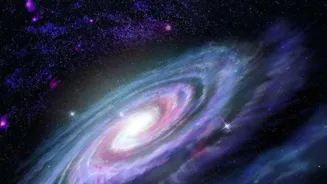Imagine life thriving on Mars, Europa, and Enceladus, powered not by sunlight, but by cosmic rays! This article explores this captivating idea, opening up new possibilities for where we might find life in our solar system. Buckle up for a cosmic journey!
Cosmic Rays Explained
Cosmic rays, high-energy particles from space, constantly bombard planets and moons. These particles can penetrate surfaces and interact with materials, potentially providing an energy source. This is a thrilling concept, especially for celestial bodies like Mars, Europa, and Enceladus, where sunlight is limited or non-existent, offering a unique perspective on the habitability of these environments.
Mars: A Different Prospect
On Mars, cosmic rays could offer a source of energy for subsurface life. If any life forms exist below the surface, these particles could power their metabolic processes. The rover's discoveries and future missions could further unlock the mysteries of Martian subterranean life, giving Indian scientists exciting avenues for research and exploration.
Europa & Enceladus: Oceans Beckon
Europa and Enceladus, moons of Jupiter and Saturn respectively, are believed to harbor subsurface oceans. Cosmic rays interacting with the icy surfaces could generate energy within these oceans. The prospects of finding life within the vast waters of Europa and Enceladus are especially intriguing, offering potentially diverse ecosystems.
Implications & Future
If cosmic rays can support life, it broadens the search for extraterrestrial life. The discovery could have profound implications for astrobiology and the search for life beyond Earth. Future missions and research will be crucial to examining these possibilities, especially regarding the kind of research opportunities available to scientists in India.









